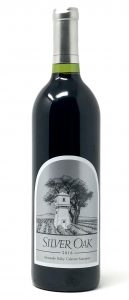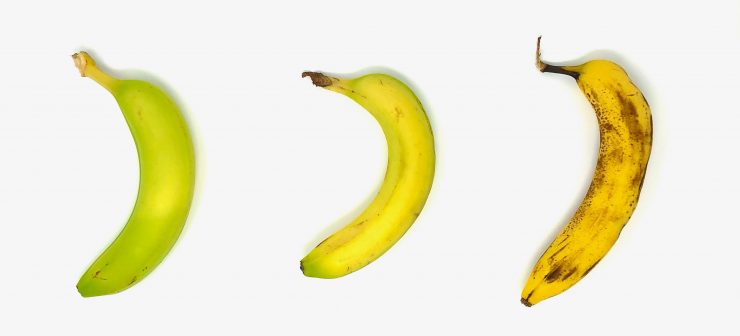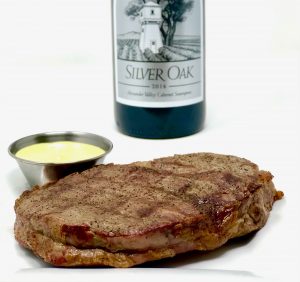WINE BLOG

Wine Pairing: Change is Important
It’s a Matter of Timing.

Much has been written about wine pairings, from the classic steak tartare and Pinot Noir to potato chips and Champagne there is a wine that is best suited to whatever fare is being served. Often times, behind that kitchen door, there is a great amount of thought going into the partnership that will occur on your dining room table.
But we need to answer one question first: are we going to pair the food to the wine? Or vice versa? If our wine choice is the priority then the food must be matched to that wine’s attributes. Wine style or varietal isn’t the only thing to consider though. The age of that bottle can also be an incredibly important factor in hitting that wine pairing out of the ball park. Let’s talk tannins.
Tannins and wine pairing
As a wine ages, tucked away in a cool temperature and humidity-controlled wine cellar, coarse tannins begin to soften, slowly, year after year. A wine once thought unapproachable, aged properly, can acquire grace and provide an experience beyond that which words can express (this is the lofty goal we dinner-planners strive toward). But an overly tannic wine served before it’s time – can be an epicurean fail.

Think of bananas. Peel a green banana (as difficult as it is to do) and bite into it. All the moisture in your mouth immediately disappears and you are left “chewing on rope”. This is the perfect example of young, coarse, mouth-drying tannins. Now let that banana sit too long on the counter and it turns to mush. Here is where culinary art and science converge. Not unlike a banana, a bottle of wine needs to be served when it is at its best.
The “drinking window” of a bottle of wine, however, is far longer than the life cycle of a banana, thankfully. This is why we seek out “classic vintages” and buy cases of six or twelve bottles, knowing that we can watch a wine evolve over the years, changing in our glass dinner after dinner, year after year.
What does the evolution of a California Cabernet Sauvignon have to do with the beef I’m cooking for dinner?
Well, how are you preparing it to ensure the best wine pairing? Let’s say you’ve purchased 12 bottles of a 2016 Alexander Valley Cab with a drinking window of 2020-2030. We know this wine will be at its most tannic at the time of purchase, but you’re excited to try it. You will want to serve this young wine with a pairing that has backbone. Those tannins will be placeholders until those “secondary flavours” kick-in with a little aging.
So you decide a beautifully marbled rib-eye steak with a simple, rich béarnaise sauce will do the trick. This meal will be all about matching texture, without too much concern for complexity. There is enough texture in this cut, and even a little fattiness that will stand up to those tannins and let you enjoy this youthful cab. Simple.
Now fast-forward a few years and you venture into you wine cellar or wine cabinet to pull that same vintage again. It now possesses softer tannins which gives way to secondary flavours like dark fruit, chocolate, and plum. Now venture into pairing it with grilled steak served with Salsa Verde, and enjoy how the more complex flavours like fennel, anchovy and chili flakes intermingle with this more expressive wine. It is a different experience each time.
Wine Pairing a Decade Later
Now a full decade has passed. You are about to open the last bottle of that 12-pack you purchased years earlier. You uncork that last bottle. The tannins have softened, and the wine is now silky, it’s nose is is reminiscent of tobacco and leather. This full, rounded, complex expression of the terroir of Alexander Valley now reclines in your glass. The preferred dinner companion now turns from a steak to roast duck, and you enjoy cinnamon, allspice, and all its gamey flavors with the heights of a perfectly aged, Alexander Valley Cabernet Sauvignon. Change is good.
FAQs
1. What wine pairs with meatloaf?
A medium-bodied red wine like Merlot or a Zinfandel pairs well with meatloaf, complementing its rich and savory flavors.
2. What wine pairs with chicken alfredo?
A creamy dish like Chicken Alfredo pairs nicely with a full-bodied white wine such as Chardonnay or a light, crisp Pinot Grigio.
3. What wine pairs with curry?
For spicy curry dishes, an off-dry Riesling or Gewürztraminer works well, balancing the heat with their sweetness and acidity.
4. What wine pairs with cheesecake?
A sweet dessert wine like Moscato d’Asti or a Sauternes complements the richness of cheesecake beautifully.
James Oatway
CAPS & Court of Master Sommeliers
Certified Sommelier

